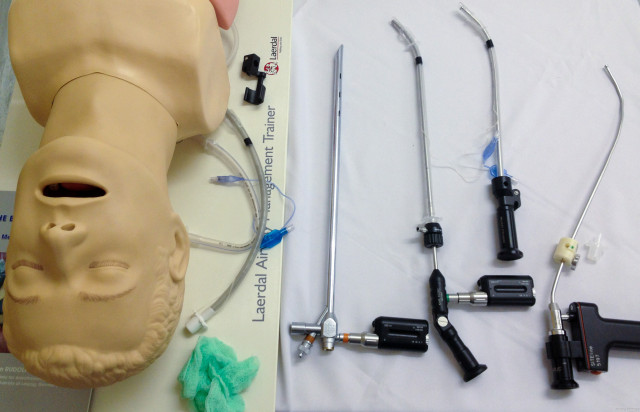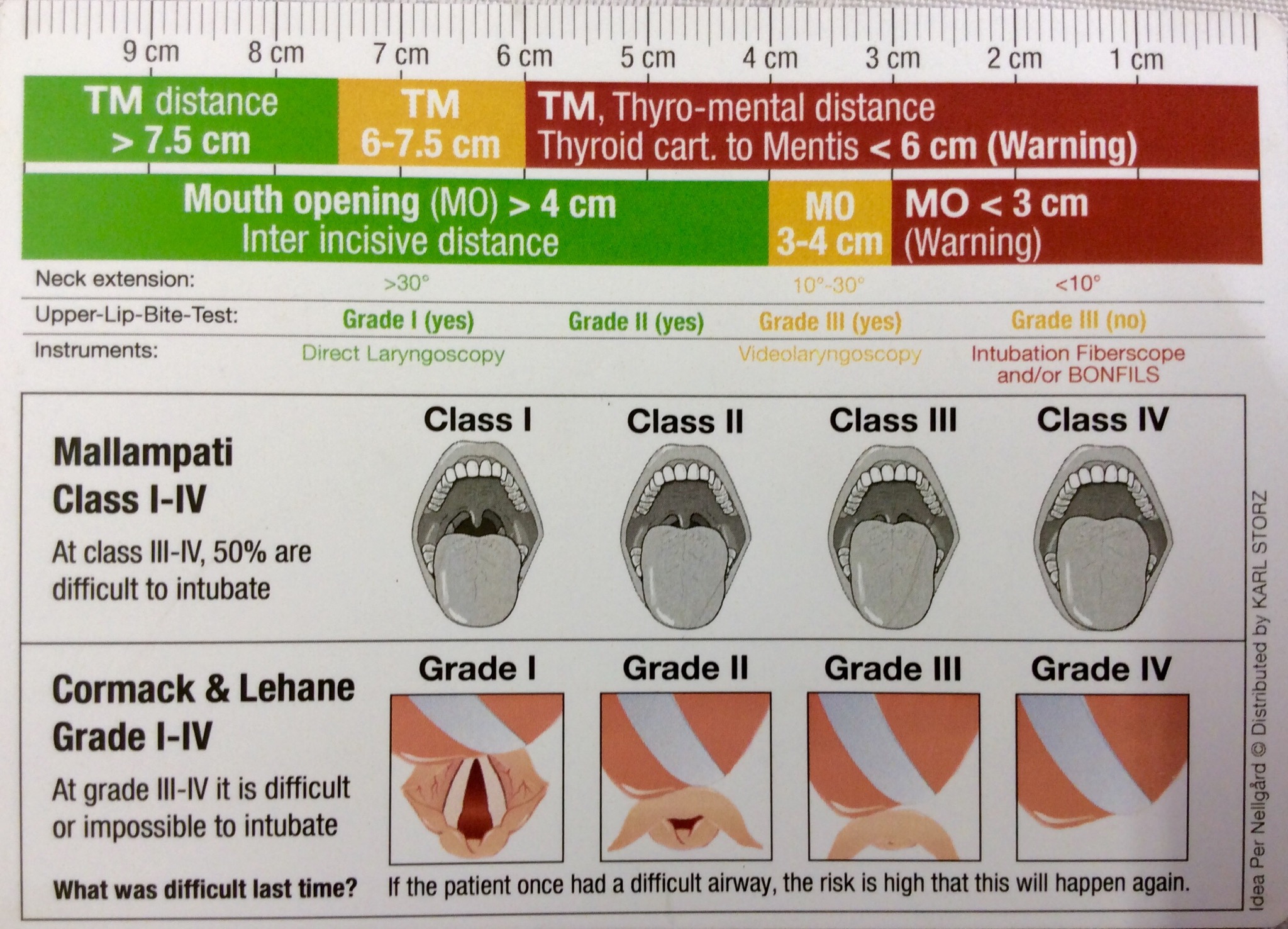Rigid endoscopes are very valuable tools for intubation in certain difficult scenarios, but are not commonly used in most centres. The techniques and learning curve differ significantly from normal direct laryngoscopy, requiring independent practice to become proficient. Pictured here are (left to right) a rigid bronchoscope, Bonfils, Levitan and Shikani optical stylets (rigid intubating endoscopes).

This is the set-up for basic training on an UCT Anaesthesia Airways course. Which of these devices have you used? Do you have tricks or comments to share?










